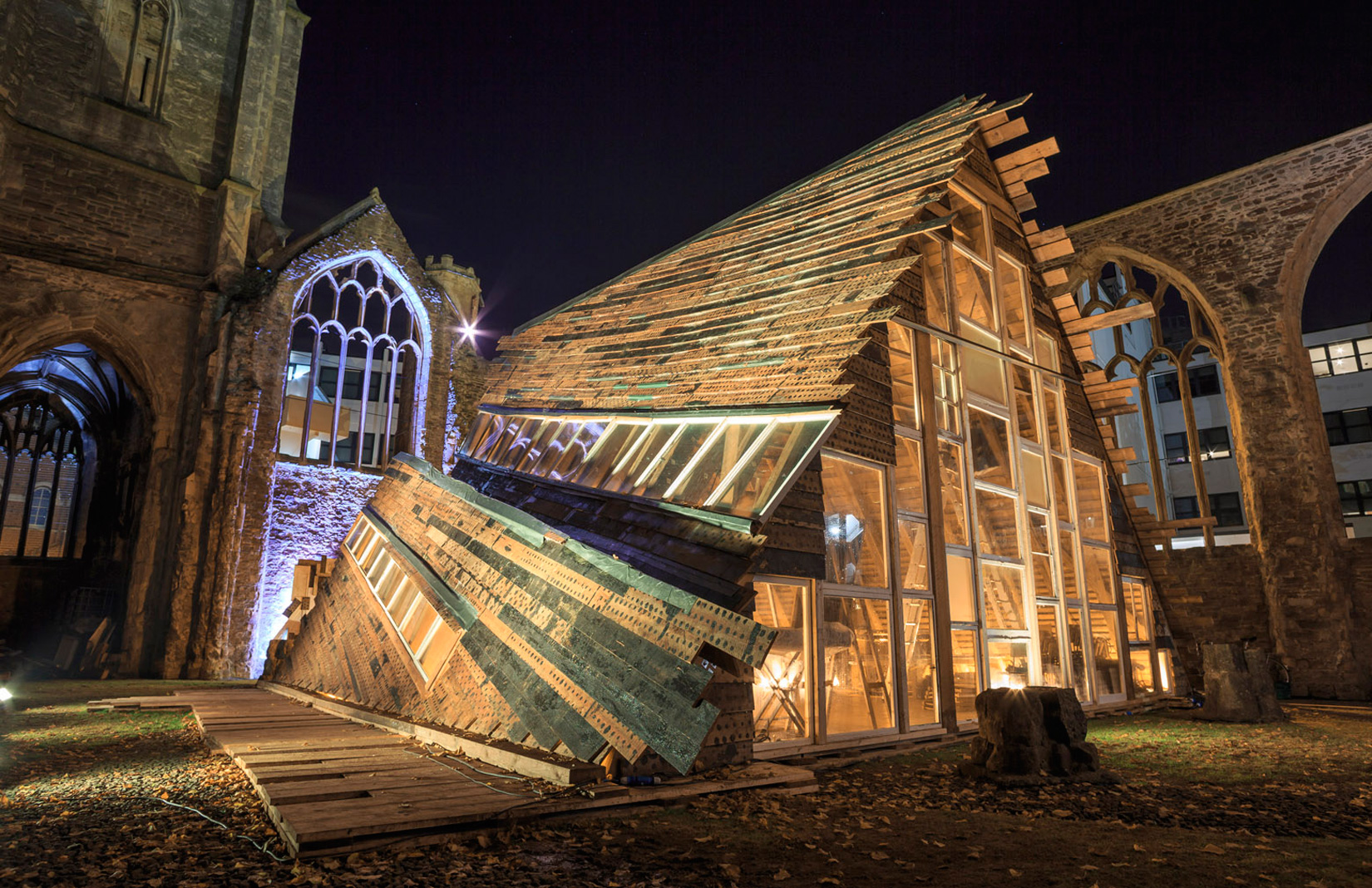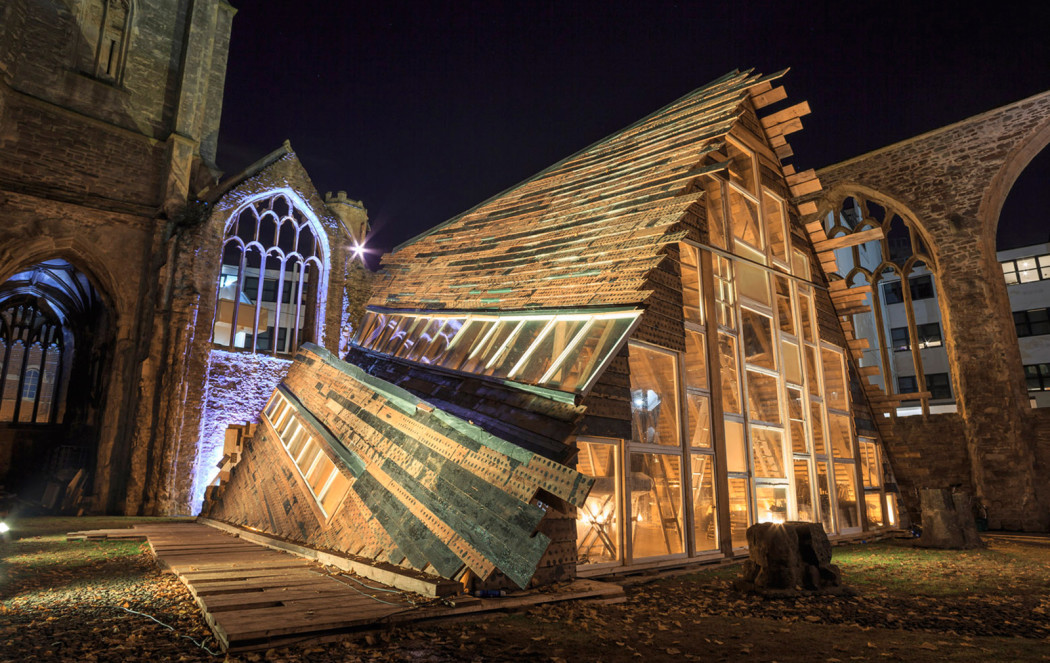
Photography: Max McClure
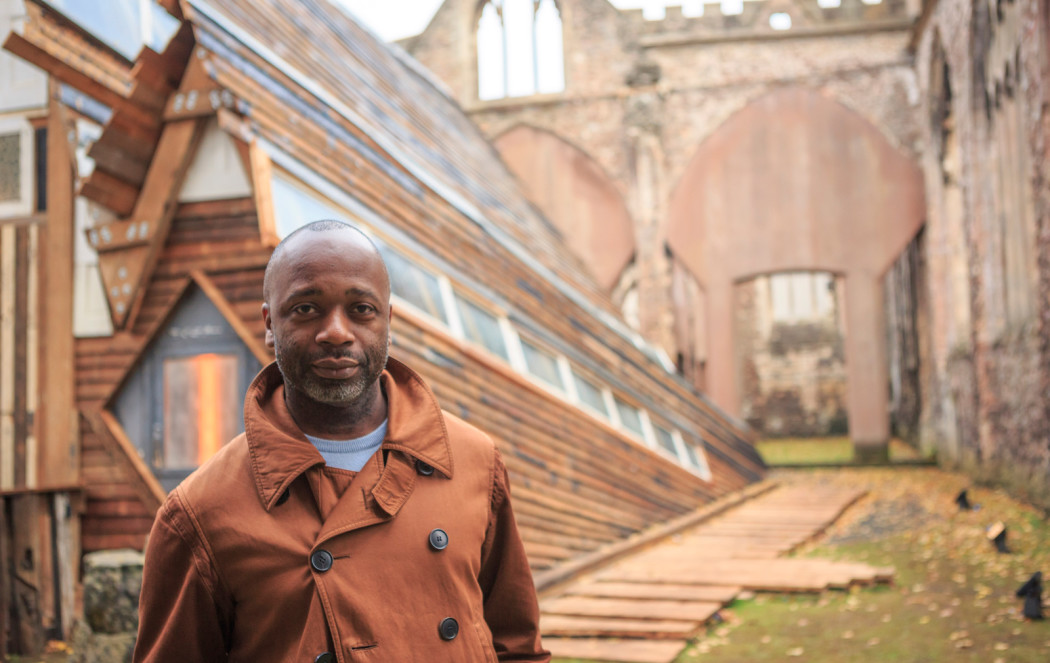
Photography: Max McClure
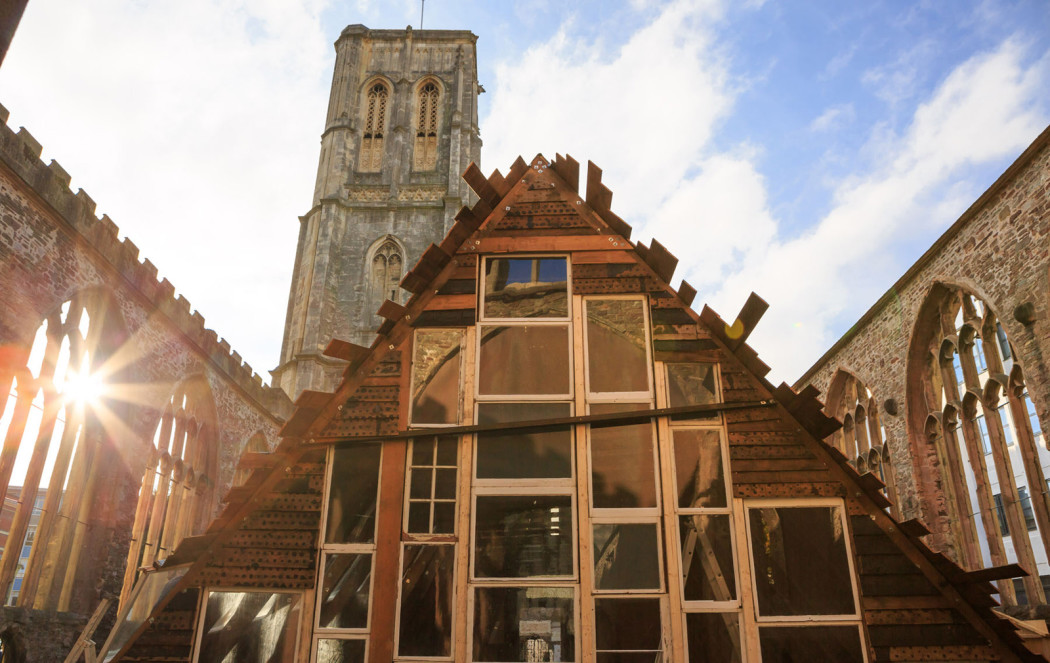
Photography: Max McClure
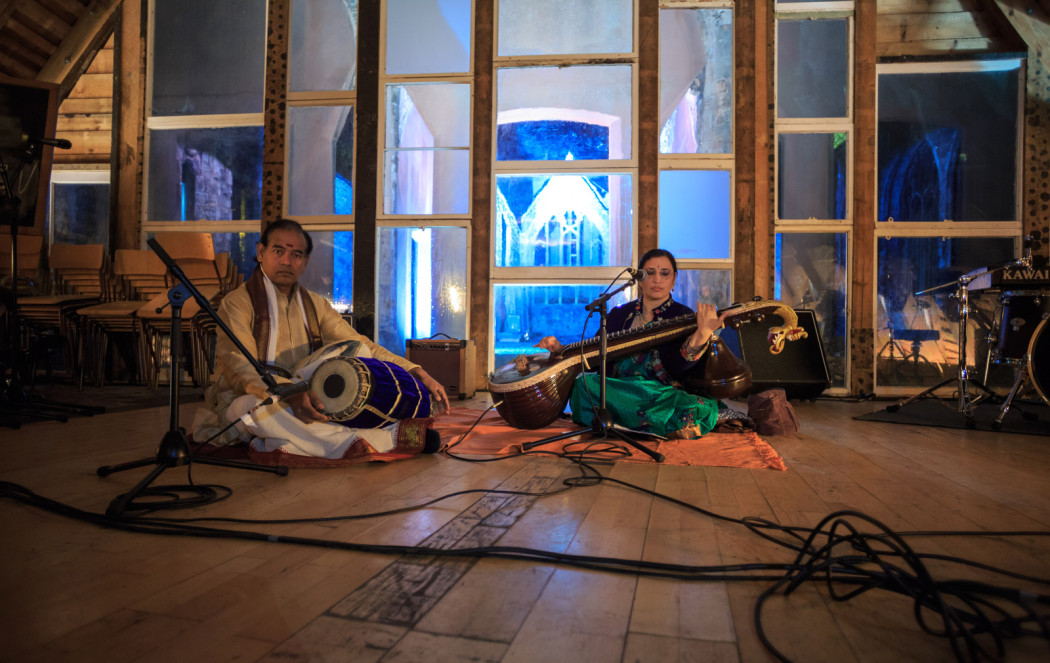
Photography: Max McClure
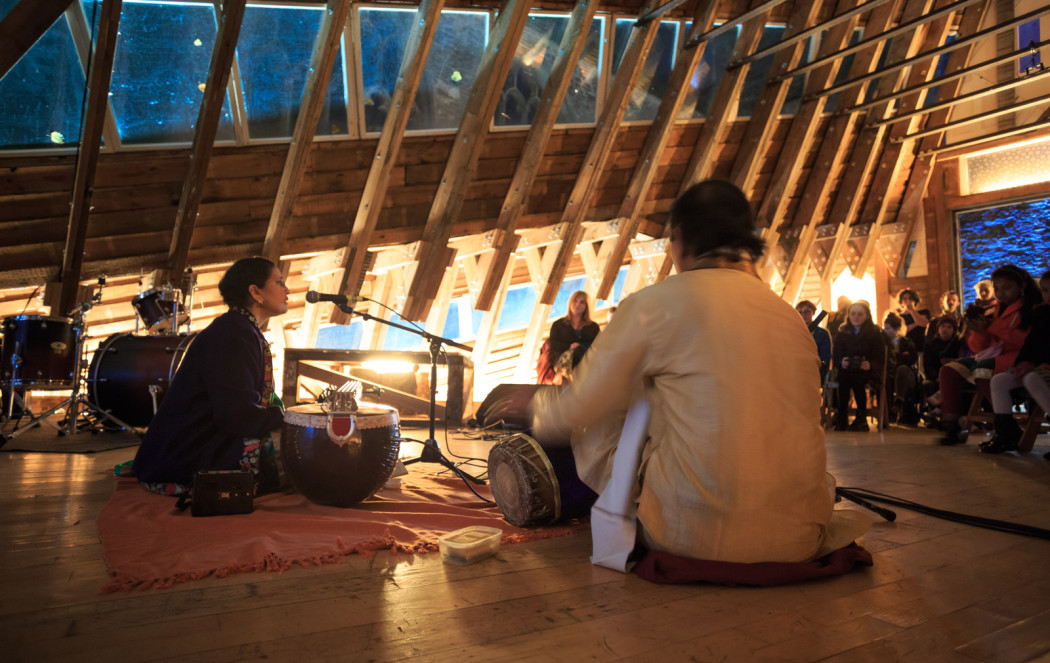
Photography: Max McClure
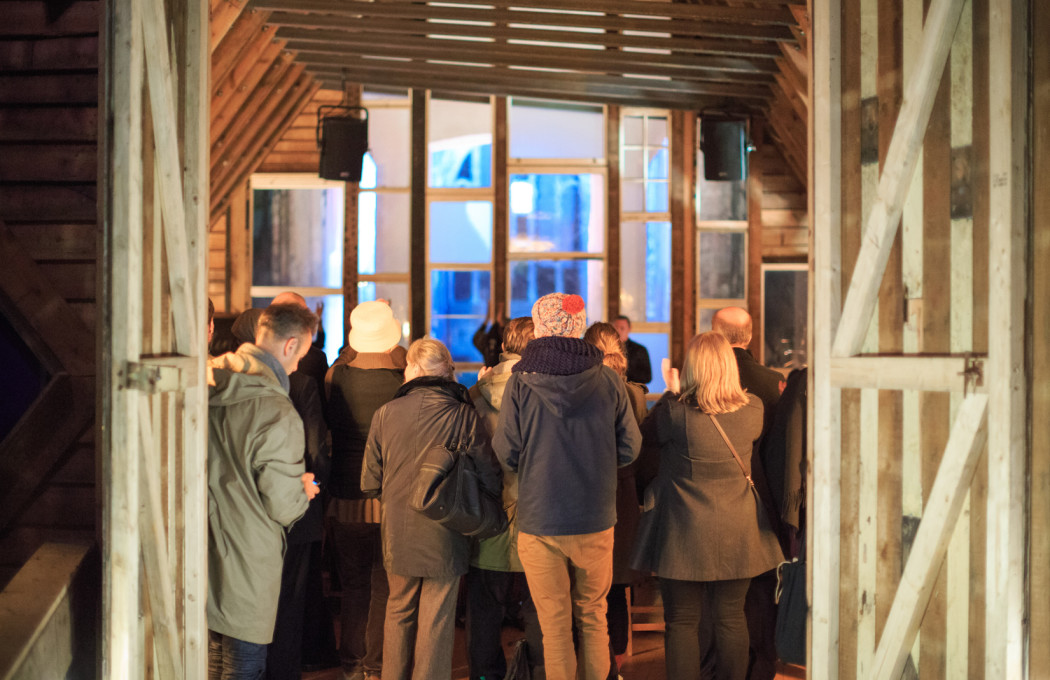
Photography: Max McClure
Sanctum, a chapel-like structure designed by the Chicagoan artist Theaster Gates, opened with a bang in Bristol last week. Upping the decibels further were dub beats, the whine of a mouth organ, raised voices and guitar chords. These first performances kicked off a procession of sonic novelties – to include everything from experimental classical music to a samba band – that will continue to animate the space around the clock between now and 21 November.
Celebrated for his community-empowering art enterprises – such as the recently opened Stony Island Arts Bank – and for sculptural works made using salvaged building materials, Theaster Gates lives up to expectation with Sanctum. This project has a social core, designed to bring the city together with music and sound. Housed in an architecturally undistinguished area populated by chain hotels and anonymous office blocks, Sanctum is also very much art beyond the white cube.
This is, however, the artist’s most ‘hands off’ project to date. While the design of the structure – commissioned by public arts body Situations – is by Gates, the sourcing of the materials and building work took place in his absence, and the programming of the 210 performers booked for the space was undertaken by local arts organisation MAYK.
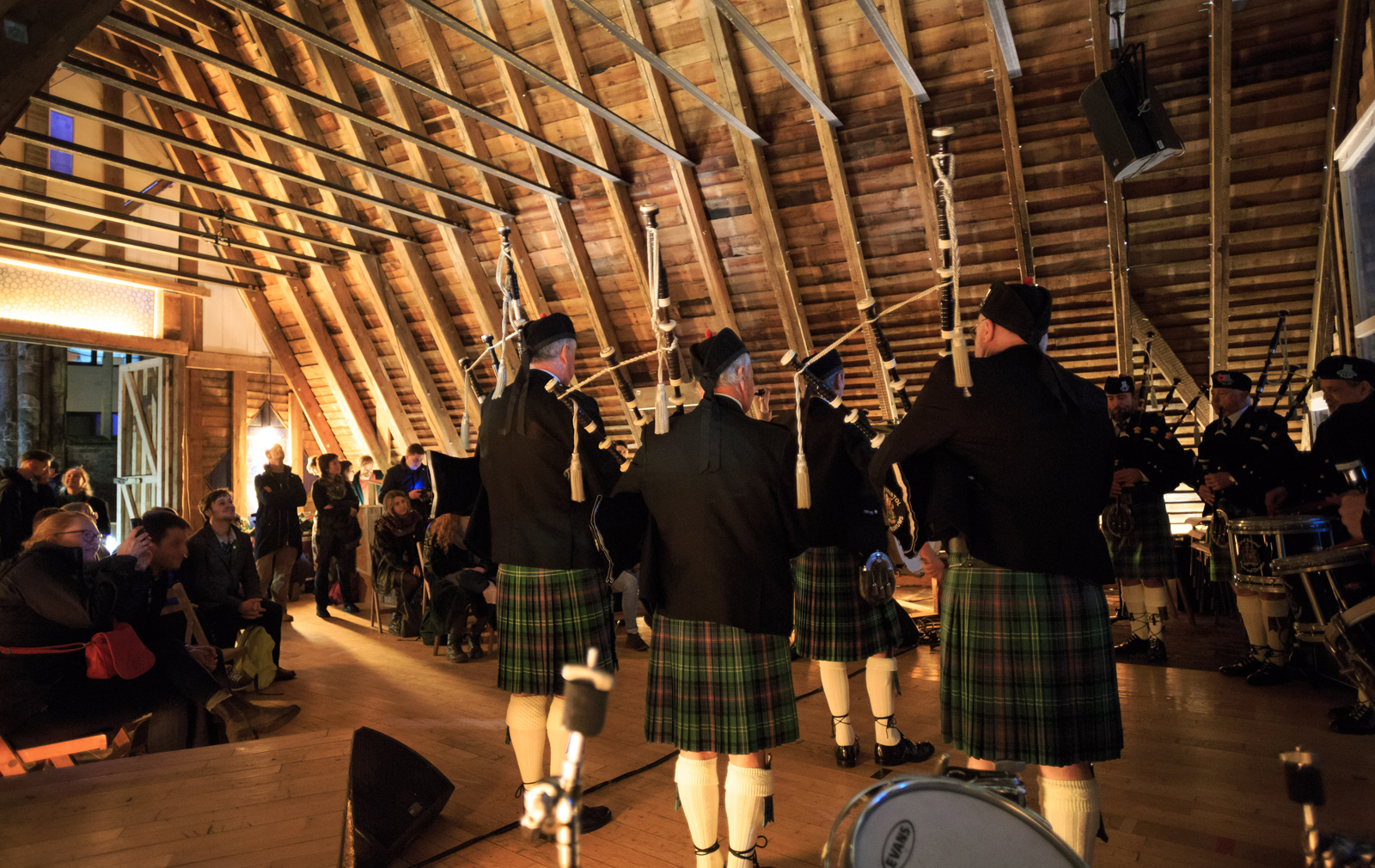
Encased in the shell of the bombed 14th-century Temple Church, the double peaked wooden A-frame structure is pieced together from materials reclaimed from Bristol buildings, including a Salvation Army chapter, a sugar warehouse and a chocolate factory. The materials’ former life is well evident: diamond shapes in the façade are hammered together from segments of old doors and the long boards that form the roof and walls are dotted with the dark stains of old nails and tar.
A long, angled strip of windows – all still in their original frames – slices through the southern façade of the structure, allowing light to traverse the space throughout the day. To the east, a large wall of reclaimed windows forms the backdrop of the performance area, giving views out onto the ruined church structure beyond.
While Gates has said that Sanctum is not a work about god or religion per se, he put the role of the church in his own life centre stage at a performance on Saturday night. It was billed as a lecture, yet Gates instead sang his way – unaccompanied, and in a somewhat improvisational manner – through all the hymns that he could remember. Audience discomfort in the face of this unexpected attack of performance art was palpable, and hammered home how far divorced such soul-bearing song is from the daily round. (Admittedly the ecstatic All Blacks fans in the streets beyond seemed to have very little trouble finding their own voices).
Gates’ rough, impassioned and very personal performance indicated a deeper role for Sanctum – a space for Bristol to raise its voice in song, in contexts beyond that of sporting triumph.




